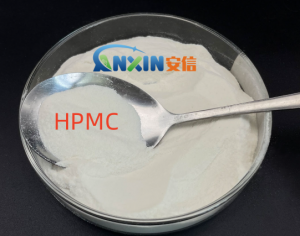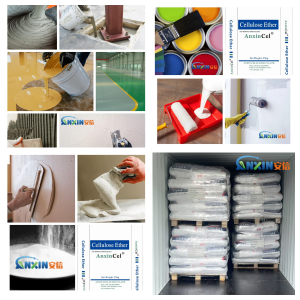Hydroxypropyl Methylcellulose (HPMC) is a nonionic cellulose ether chemically modified from natural high-molecular-weight cellulose. Its combination of methoxy and hydroxypropoxy substituents gives it unique physical and chemical properties and a wide range of applications.
1. Physical Properties
HPMC is a white or off-white powder that is generally odorless, tasteless, and non-toxic. Its particles are fine and have excellent flowability. Typical products have an apparent density of approximately 0.25–0.70 g/cm³ and can be stored for extended periods after drying without agglomeration. The particle size of HPMC can be adjusted to meet application requirements. For example, construction-grade products often have coarse particles to slow dissolution, while pharmaceutical and cosmetic grades are fine powders for faster dissolution.
2. Chemical Properties
HPMC is a nonionic cellulose ether derived from methylcellulose modified by hydroxypropylation. Its properties are determined by the degree of substitution (DS) and molar substitution (MS). It does not participate in ionic reactions, exhibits strong stability, and exhibits excellent acid and alkali resistance. Its properties remain essentially unchanged within the pH range of 3 to 11, and it will not gel or precipitate due to pH fluctuations. HPMC exhibits excellent chemical inertness and is highly compatible with most additives and formulations.
3. Solubility
One of HPMC’s most significant characteristics is its cold-water solubility. It disperses in cold water to form a transparent or translucent solution, but is insoluble in hot water. When the temperature rises to the gelation temperature (approximately 60-90°C, depending on the type), it precipitates and forms a gel, which then redissolves upon cooling. This thermoreversibility is a key characteristic of HPMC that distinguishes it from other cellulose ethers. Furthermore, HPMC is soluble in some organic solvents and water/alcohol mixtures, demonstrating broad solvent compatibility.
4. Functional Properties
4.1. Thickening Properties
HPMC significantly increases the viscosity of aqueous solutions, and the solutions exhibit pseudoplasticity with excellent rheological properties. This property makes it suitable for use as a thickener and rheology modifier in building mortars, coatings, and adhesives.
4.2. Water Retention
Due to its strong hydrophilicity and film-forming properties, HPMC effectively prevents rapid water loss in cement mortar and gypsum products, ensuring smooth hydration reactions and preventing cracking.
4.3. Film-Forming Properties
After evaporation, HPMC forms a flexible, transparent film on the substrate surface, exhibiting excellent adhesion and crack resistance. It is widely used in pharmaceutical coatings, food films, and cosmetic film-forming agents.
4.4. Adhesion and Lubrication
In granular formulations and tableting processes, HPMC acts as a binder to enhance granule strength and provides lubrication in cosmetics and personal care products.
4.5. Emulsion Stability
Due to its surface activity and viscosity stability, HPMC possesses certain emulsifying, dispersing, and stabilizing properties.
5. Application Characteristics
Due to its non-toxicity, environmental friendliness, and adjustable performance, HPMC is widely used in various fields:
Construction Industry: Used in dry-mix mortars, tile adhesives, self-leveling materials, and gypsum-based materials to improve workability, water retention, and adhesion. Pharmaceutical Industry: Used as a tablet coating, matrix sustained-release material, suspension stabilizer, and vegetarian capsule shell.
Food Industry: Used as a thickener, emulsifier, and water-retaining agent in products such as bread and beverages.
Household Chemical Industry: Used in shampoos, lotions, and facial masks to increase consistency, moisturize, and form a film.
Coatings and Paints: Improves leveling and prevents pigment settling.
Hydroxypropyl methylcellulose has excellent solubility, thickening, water retention, film-forming properties, and chemical stability. It is non-toxic, safe, and biodegradable, making it an indispensable additive in modern construction, pharmaceutical, food, and household chemical products. Its performance parameters can be adjusted based on the degree of substitution and viscosity grade to meet the needs of different industrial applications.
Post time: Aug-04-2025








